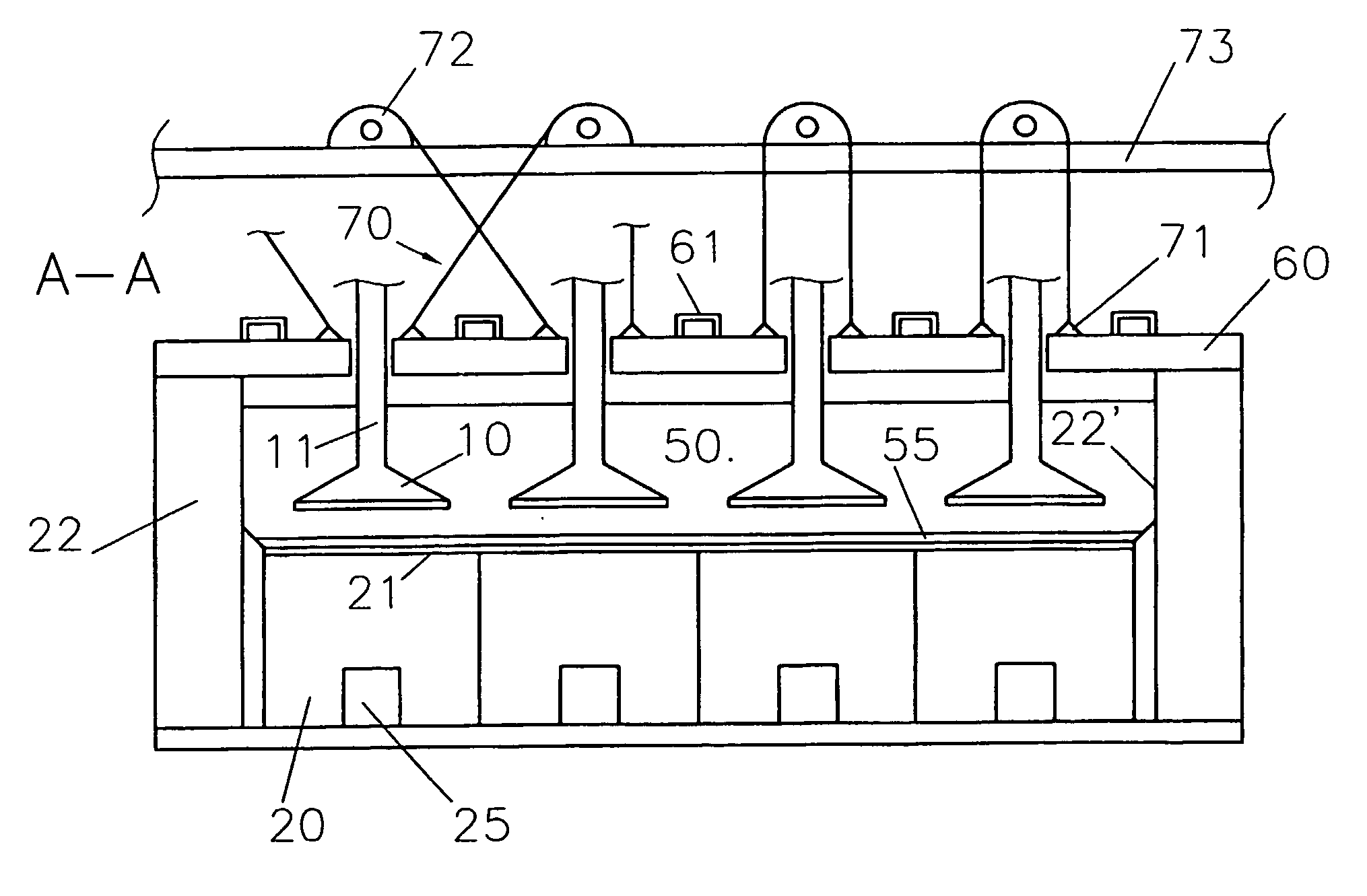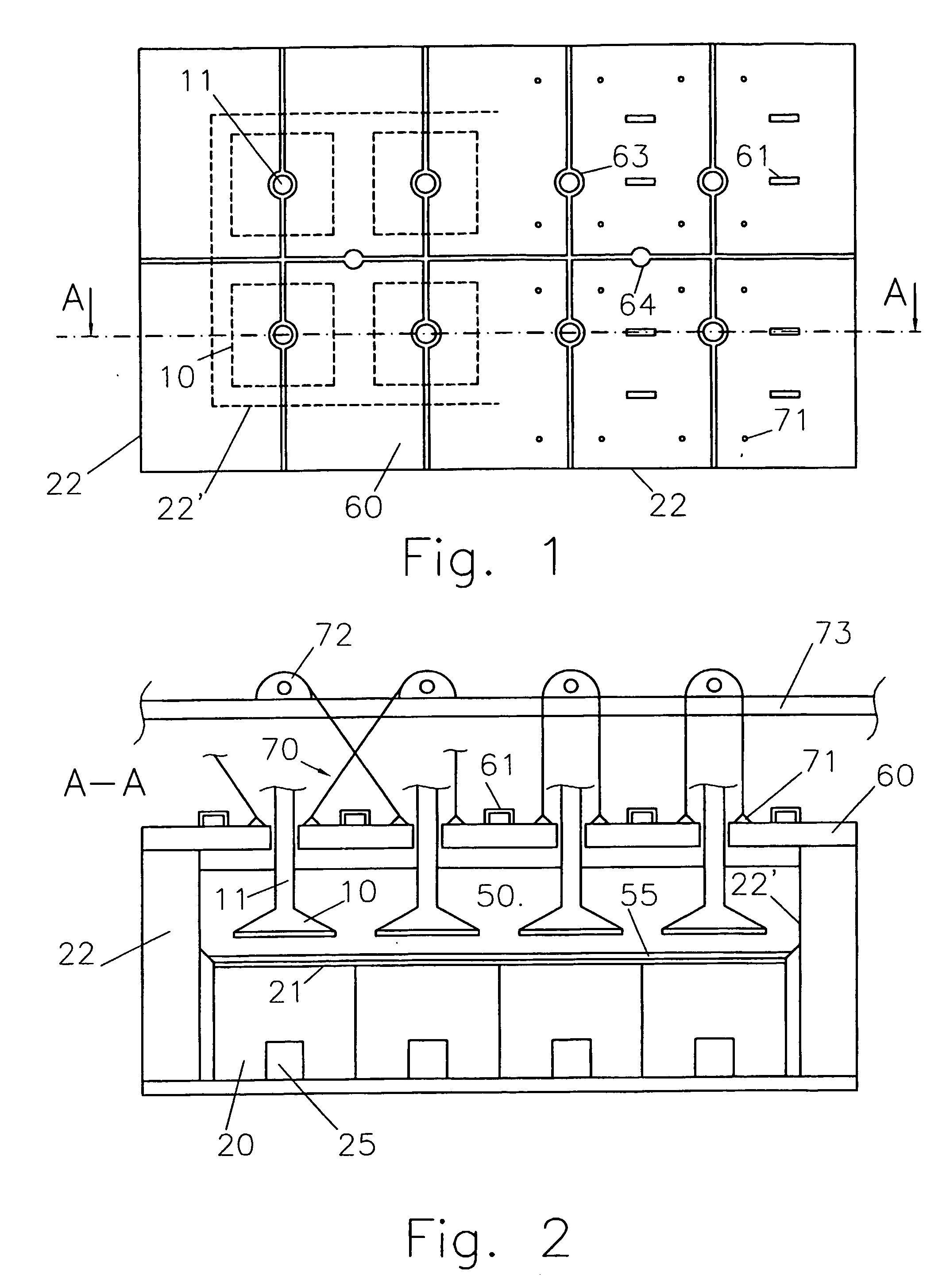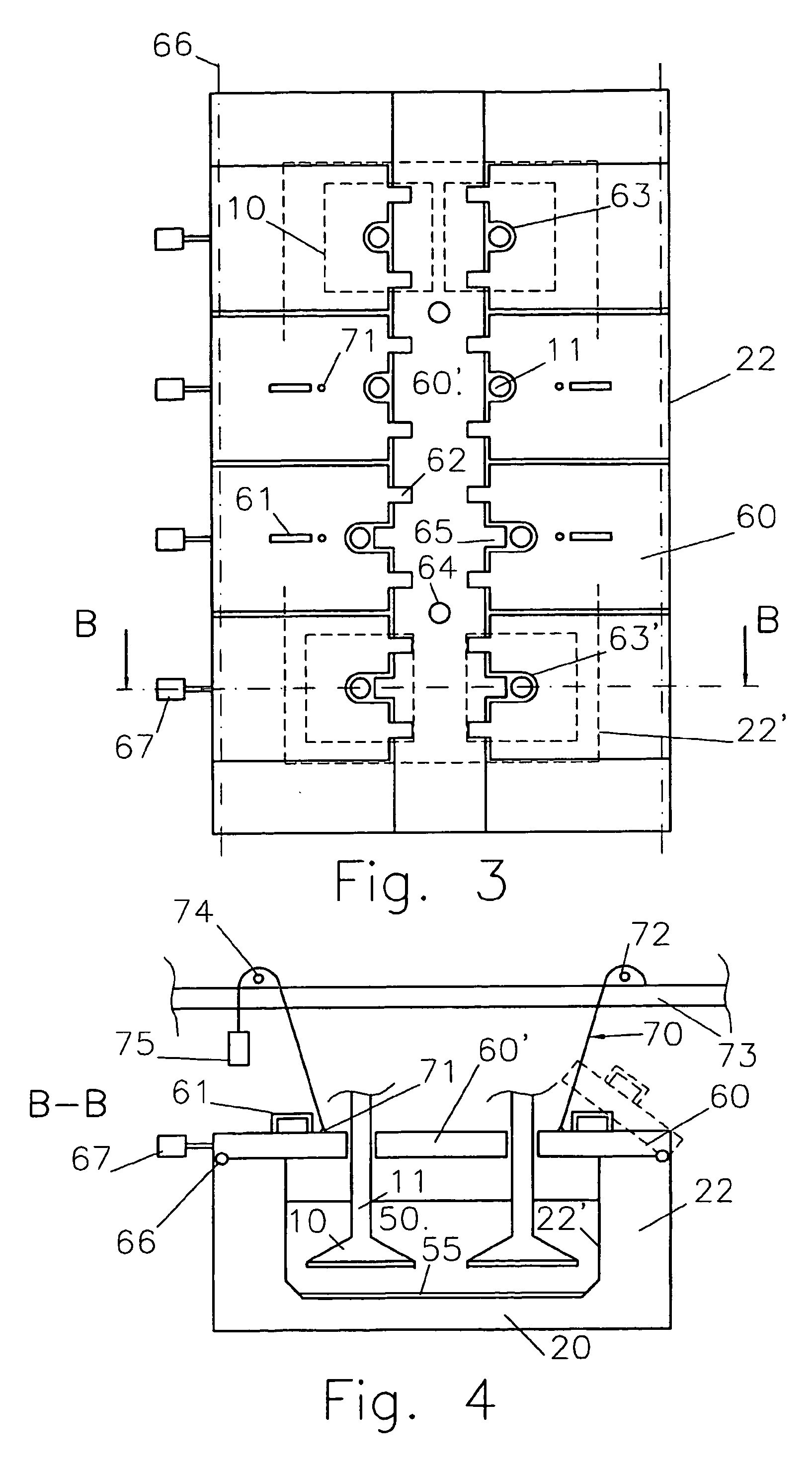Aluminium electrowinning cell design with movable insulating cover sections
- Summary
- Abstract
- Description
- Claims
- Application Information
AI Technical Summary
Benefits of technology
Problems solved by technology
Method used
Image
Examples
Embodiment Construction
[0041]FIGS. 1 and 2 illustrate an aluminium electrowinning cell having a series of anodes 10 (shown in dotted lines on the left-hand side of FIG. 1) connected to a positive current source and suspended over a cathode bottom 20 by anode stems 11. The cathode bottom 20 is made of side-by-side carbon blocks covered with an aluminium-wettable coating 21 and product aluminium 55 and connected to a negative bus bar through steel bars 25 that extend along the cathode blocks.
[0042] The cathode can be covered with a shallow pool of molten aluminium (not shown) or with a thin layer of aluminium 55 as shown in FIG. 2, the cathode bottom 20 being in a drained configuration in which case the cell bottom should be provided with an aluminium collection reservoir, for instance as disclosed in the abovementioned references.
[0043] The anodes 10 are immersed in a molten fluoride-based electrolyte 50 covered by an insulating cover that is made of movable sections 60 arranged side-by-side along the ce...
PUM
 Login to View More
Login to View More Abstract
Description
Claims
Application Information
 Login to View More
Login to View More - R&D
- Intellectual Property
- Life Sciences
- Materials
- Tech Scout
- Unparalleled Data Quality
- Higher Quality Content
- 60% Fewer Hallucinations
Browse by: Latest US Patents, China's latest patents, Technical Efficacy Thesaurus, Application Domain, Technology Topic, Popular Technical Reports.
© 2025 PatSnap. All rights reserved.Legal|Privacy policy|Modern Slavery Act Transparency Statement|Sitemap|About US| Contact US: help@patsnap.com



